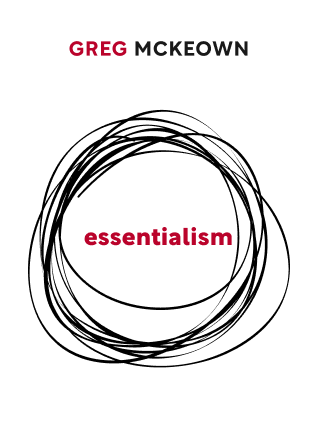

This article is an excerpt from the Shortform book guide to "Essentialism" by Greg McKeown. Shortform has the world's best summaries and analyses of books you should be reading.
Like this article? Sign up for a free trial here .
What is Greg McKeown’s book Essentialism about? What does he mean by “the disciplined pursuit of less”?
Essentialism is a 2014 book by leadership and business strategist Greg McKeown, in which he walks you through his principles of essential living. He calls his living philosophy “the disciplined pursuit of less,” which is all about investing your time and energy only in what’s essential in order to make the optimum contribution to the things that really matter to you.
Keep reading for more about Greg McKeown’s book Essentialism: The Disciplined Pursuit of Less.
The Essentialism Book: Main Premise
We feel constantly pressed for time. We try to do too much, yet when someone makes a request, we say yes without thinking. We feel we have to do it all. But because we’re going in so many directions, we make little progress in any of them. Yet most of these activities are trivial. As Greg McKeown, author of Essentialism: The Disciplined Pursuit of Less, puts it, we’re majoring in minor activities. The way out of this trap is to practice essentialism or “the disciplined pursuit of less.”
In his book Essentialism, Greg McKeown illustrates the essentialist approach to life using the closet analogy. If you neglect your closet, it gets disorganized and crammed with items you don’t wear. You purge it periodically when it gets totally out of control. But if you don’t have an ongoing system that you stick to, you’ll keep ending up with a messy closet. The same happens to your life: you say yes to too many things without a sense of overall purpose and your schedule soon overflows.
An essentialist approach to your closet — or your life — consists of three phases, in which you consider tough questions:
1) Explore options: When sorting items in a closet, you’d typically ask yourself whether you might wear an item someday. But an essentialist asks a tougher question: Is this item a favorite that I wear often? If the answer’s no, toss it. In your life, the key question is, is this activity essential to making my optimum contribution?
2) Eliminate nonessentials: You have trouble getting rid of things because of sunk-cost bias. This means you place a greater value than they’re worth on things you own because you’ve invested in them, so you’re reluctant to get rid of them. To circumvent this bias, ask yourself what you’d be willing to pay for the item if you didn’t already own it. This may be the reality check you need to realize the item’s true worth. Regarding an activity, the question could be, “if it hadn’t just popped up, would I go out of my way to seek out this activity?” If the answer is no, it’s probably not an “essential” activity.
3) Execute routinely: For your closet to stay organized, you need a maintenance system that’s automatic. In your life, once you’ve decided what things to pursue, you need a system to make doing the important things simple and routine.

———End of Preview———
Like what you just read? Read the rest of the world's best book summary and analysis of Greg McKeown's "Essentialism" at Shortform .
Here's what you'll find in our full Essentialism summary :
- How to do less but to do it better
- Why you need to be disciplined in your pursuit of less
- How you can learn to say no






